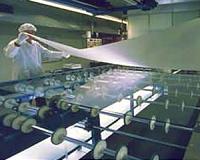 |
Cairo, Egypt (SPX) Nov 22, 2010 Extensive construction of wind and solar power plants is planned in North Africa as part of the desert electricity project, DESERTEC. What are the aims of the North African countries with regard to this plan? How do they view DESERTEC? In the interview, Prof. A. Khalil, Vice Dean of the Faculty of Engineering at the University of Cairo, discusses renewable energy in Egypt and the DLR project Energy in the Middle East and North Africa, enerMENA. Under the leadership of the German Aerospace Center (Deutsches Zentrum fur Luft- und Raumfahrt; DLR), the enerMENA project is targeting intensified cooperation between engineers and technicians from Europe, North Africa and the Middle East. During November and December 2010, engineers and technicians will, for the first time, be trained in the construction and operation of solar power plants. The training will take place in Almeria, Spain.
What do people in Egypt think about the Desertec desert electricity project? Many people look at it as a resource, like having an oil well; we can use the desert areas to produce electricity. So this would create additional national income and an increase in jobs. This is a good sign. The interest in Egypt is actually in fresh water, as well as electricity. Here, the picture is very different from Germany or the rest of Europe; the Desertec concept will get much more support if we can use it to produce water, as well as electricity.
What, in your opinion, are the advantages for Egypt?
What are the first steps for the Desertec plan in Egypt? The problem with renewable energy is that it is not available 24 hours a day. We currently have windmills and a Concentrating Solar Power (CSP) plant, which will be commissioned in a few months, but the costs are still very high and we need to bring them down. To do this, we need to build up local industry using local manpower; then, economies of scale will kick in. With large plants, costs go down and the plants become competitive. However we are pushing for a bigger share of the subsidies; we cannot wait for 20 years to break even.
Do you think Desertec will stimulate the local job market? We have experts in this area who are collaborating with their counterparts in Germany; the exchange is stimulated by several programmes. We are badly in need of renewable energy. Although my background is in nuclear power, I believe that in the long term, renewable energy will prevail. The very first CSP plant was built Cairo in 1913. At that time, the price of coal was 30 US dollars per ton. So the American investors built the CSP plant to produce steam, which was used to pump water and irrigate cotton fields. However these efforts were interrupted by the war and the discovery of oil. But that investor had said that once the oil runs out, we would have to return to solar power.
You have been involved in the enerMENA project from the very beginning. What is you experience so far? We have experts in this area who are collaborating with their counterparts in Germany; the exchange is stimulated by several programmes. We are badly in need of renewable energy. Although my background is in nuclear power, I believe that in the long term, renewable energy will prevail. The very first CSP plant was built Cairo in 1913. At that time, the price of coal was 30 US dollars per ton. So the American investors built the CSP plant to produce steam, which was used to pump water and irrigate cotton fields. However these efforts were interrupted by the war and the discovery of oil. But that investor had said that once the oil runs out, we would have to return to solar power.
Share This Article With Planet Earth
Related Links enerMENA project All About Solar Energy at SolarDaily.com
 Total Launches Project To Build French Solar Panel Plant
Total Launches Project To Build French Solar Panel PlantParis, France (SPX) Nov 19, 2010 Total has announced the construction of a photovoltaic panel production and assembly unit at Composite Park in France's north-eastern region of Moselle. With a surface area of 2,800 square metres, the plant will house two production lines for a total capacity of 50 megawatt peak (MWp) representing about 220,000 photovoltaic panels per year. Construction is scheduled to begin in early 2011 ... read more |
|
| The content herein, unless otherwise known to be public domain, are Copyright 1995-2010 - SpaceDaily. AFP and UPI Wire Stories are copyright Agence France-Presse and United Press International. ESA Portal Reports are copyright European Space Agency. All NASA sourced material is public domain. Additional copyrights may apply in whole or part to other bona fide parties. Advertising does not imply endorsement,agreement or approval of any opinions, statements or information provided by SpaceDaily on any Web page published or hosted by SpaceDaily. Privacy Statement |